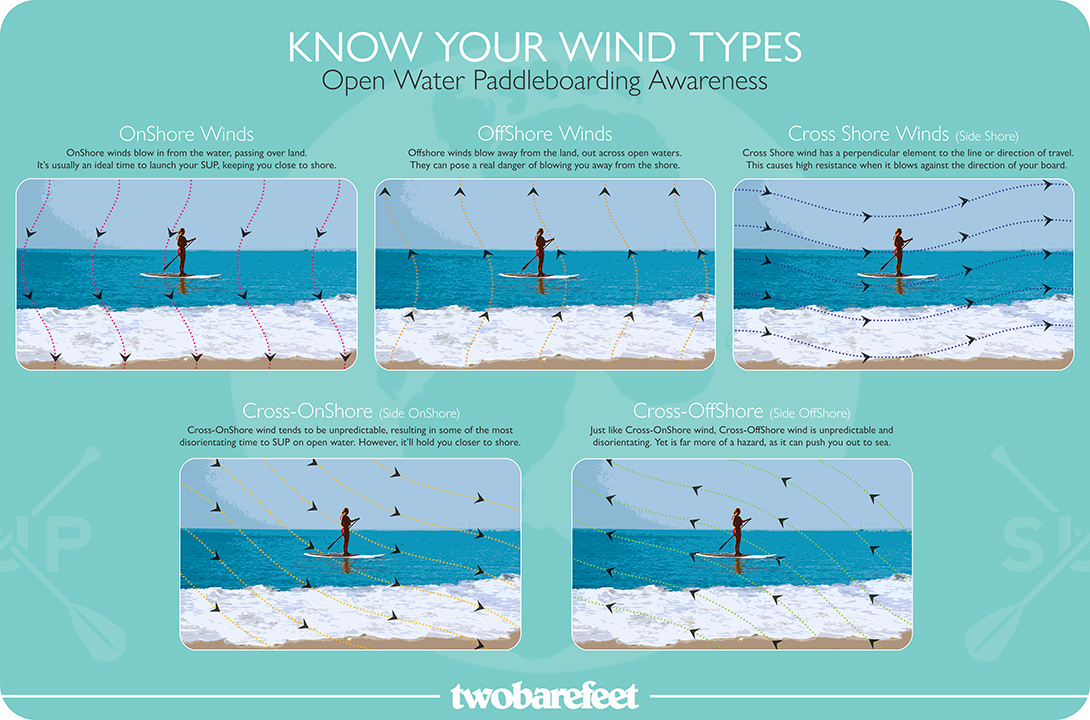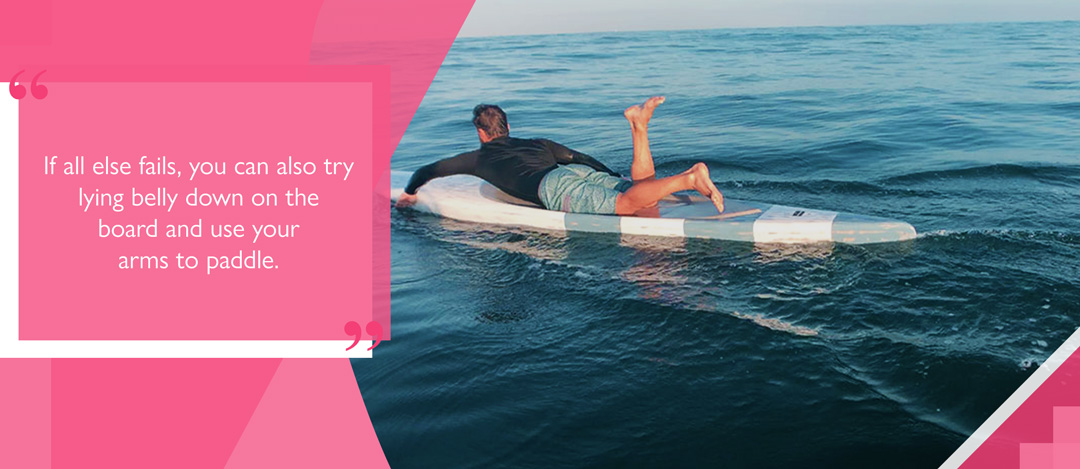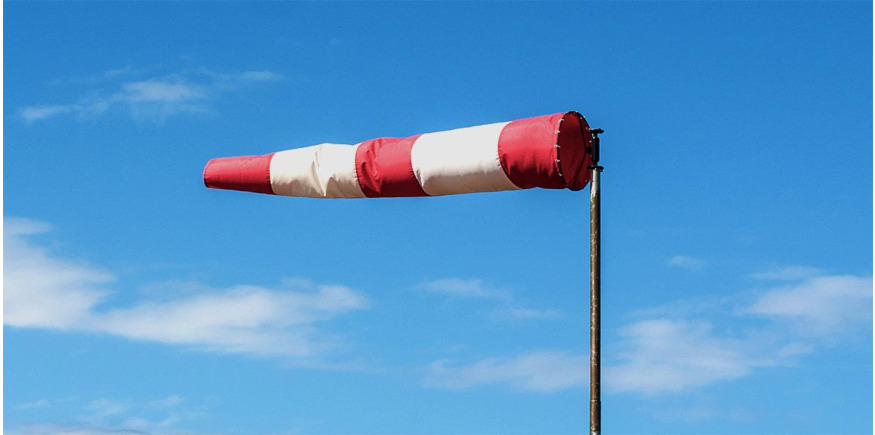The wind can be a major factor in the performance of a paddle board on the water. Having the wind at your back can be an advantage when travelling long distances or if you need a speed boost, paddling headlong into the wind can make progress challenging, while gusts cutting across the board can push a paddler off balance, and off track.
Of course, the wind can change — and with it comes an element of unpredictability for paddleboarders: what is a favourable wind, and how best to manage the problems caused by wind conditions?
Paddle boarding wind speed
Most sources tend to settle at a wind speed of around 10–12 knots (up to 14 mph) as being suitable for casual paddling. Anything more than that is going to be considered a challenge for those not confident with their technique or stamina.
Of course, going out in a 15 mph breeze is not necessarily going to be ‘unsafe’ if you’re intending to surf or ride downwind, but equally those types of activities are likely to attract more experienced paddlers.

Wind types
Especially for beginners, it’s important to be wary of offshore winds, i.e. a wind blowing away from the land out across open waters. With an offshore wind at your back, it’s easy to misjudge just how far it may carry you out from the shore. Reversing direction to land would then involve paddling against a headwind, which requires more effort and can sap strength.
It’s recommended you launch into an onshore wind: one blowing in from the water onto land. While you’ll encounter some resistance on the outward phase, you’ll have an easier ride back to the shore.
Crosswinds that blow across the paddler can work against the direction of travel, disrupting straight-line tracking. You will need to compensate for this by paddling harder on the opposite side of the board to counter the wind’s force. Experienced paddlers may even try tacking into the wind — while this means paddling into a headwind, the board will be more stable.

Watching the weather
While it may seem to go against the spirit of adventure, scheduling your time out on the water according to the weather is a sensible precaution. There are many websites and apps that can help with this.
The key is to monitor conditions in advance. Get a sense for the best ‘window of opportunity’ and then make the call on the day you plan to go. Nothing is more frustrating than looking out the window at a sunny day, and only realising how windy it is once you get to the water.
If you’re thinking about going to the coast or a large lake, have an alternative location in mind before the day, which could provide calmer conditions if the weather is not as predicated.
Paying attention to wind direction
While it is possible to predict and track its behaviour, the wind can and will change without warning.
Pay attention to your surroundings. The clues will be seen (as well as felt) before you even get in the water: the direction in which nearby trees and other plants are being blown, along with the force of their movement, will be a good clue. Likewise, look out for any flags or banners nearby, if you are at a coastal location or water sports facility.
The water will also provide safety cues. If ‘whitecaps’ are visible on the waves, this can be a sign that wind speeds are heading above 12–15 knots or so, which means the conditions may be challenging.
If the weather changes once you arrive, try paddling closer to shore. If you do find yourself exposed when wind conditions begin to turn, make use of any natural features that could act as a wind break — for example, an island, trees or a cliffside.

Staying low
Just as your board will catch the force of the wind, so will your body. The mass of your bulk planted on the board will act like a sail, amplifying the effect of the wind on your heading and speed. In a crosswind, this will also mean struggling to stay stable.
Staying low on the board will reduce the surface area of your body exposed to the wind, while also improving stability due to your lower centre of gravity. Bending at the knees to get lower will also promote faster paddling, which can be an effective way to counter a headwind.
If you find the going difficult, kneeling on the board will improve stability and wind resistance further. If all else fails, you can also try lying belly down on the board. Placing your paddle underneath you, you can then use alternate strokes with your arms to paddle back to shore.
When exiting the water with your board, be aware that your SUP is going to act as a massive sail in a crosswind. Keep your body between the wind and the board in these circumstances.
Windy paddling discipline
Lower your grip on the SUP paddle shaft
This will encourage you to bend your knees, and to make more frequent strokes in the water. When you turn into the stroke with your hips, you’ll be using your core and upper body muscles in the motion. This will help you to gain both speed and power. Kneeling on the board will also assist with this.
Feathering the blade
In essence, this means rotating the paddle so the blade slices laterally through the air, like a knife, during the recovery phase of the stroke. This is another way of ensuring the wind doesn’t have additional surface area to act upon — preventing your paddle from becoming another ‘sail’.

Adopting an offset (‘surfer’) stance
Adopting the staggered footing of a surfer (rather than placing your feet parallel across the deck) will promote stability in tricky conditions. This requires one foot to be extended forward, with the other trailing to the rear at an angle, knees bent but not stiff – feet either side of the board’s centre line. Which foot you place forward will depend on preference – left foot forward is considered ‘regular’; right foot forward is known as ‘goofy’.
An offset posture will also have the effect of strengthening your stroke on one side. This may mean having to make corrective strokes on the opposite side of the board to stay on course.
Remember to make use of bracing strokes to help maintain balance if you feel yourself starting to wobble. Also, try not to stand too far back or forward on the board, as this may cause the tail or nose respectively to dip into the water.
For more information about some of the suggestions mentioned above, see our previous post on SUP racing technique, which covers some of the fundamentals of fast paddling and maintaining balance.
Keep informed and stay safe
Looking for more information on how to develop your SUP experience or become a more confident paddler? Our blogs contain a variety of useful information relating to aspects of paddleboarding prep, including dealing with other types of weather conditions, packing for SUP trips, and finding alternative places to paddle.




